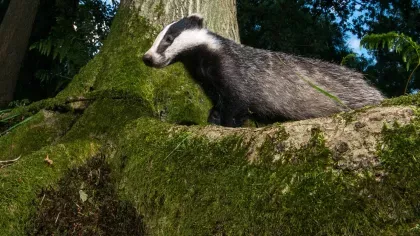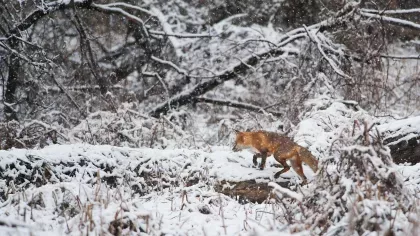22 November 2021
Life after dark
What happens at Wakehurst when people are not here?

Over lockdown, people around the world noticed that nature thrived when there was much less human activity.
Wild creatures were seen in urban environments, from coyotes in central San Francisco to fallow deer in an East London housing estate.
Scientists have called this lull the ‘anthropause’ and are studying how animal behaviour changed because of it.
Night-time is its own little anthropause in which some creatures roam more freely.
As a winter evening trail, Glow Wild brings aspects of nature to life at a time when it would normally be hidden.
Here we take a look at the creatures that can be seen at Wakehurst after dark.
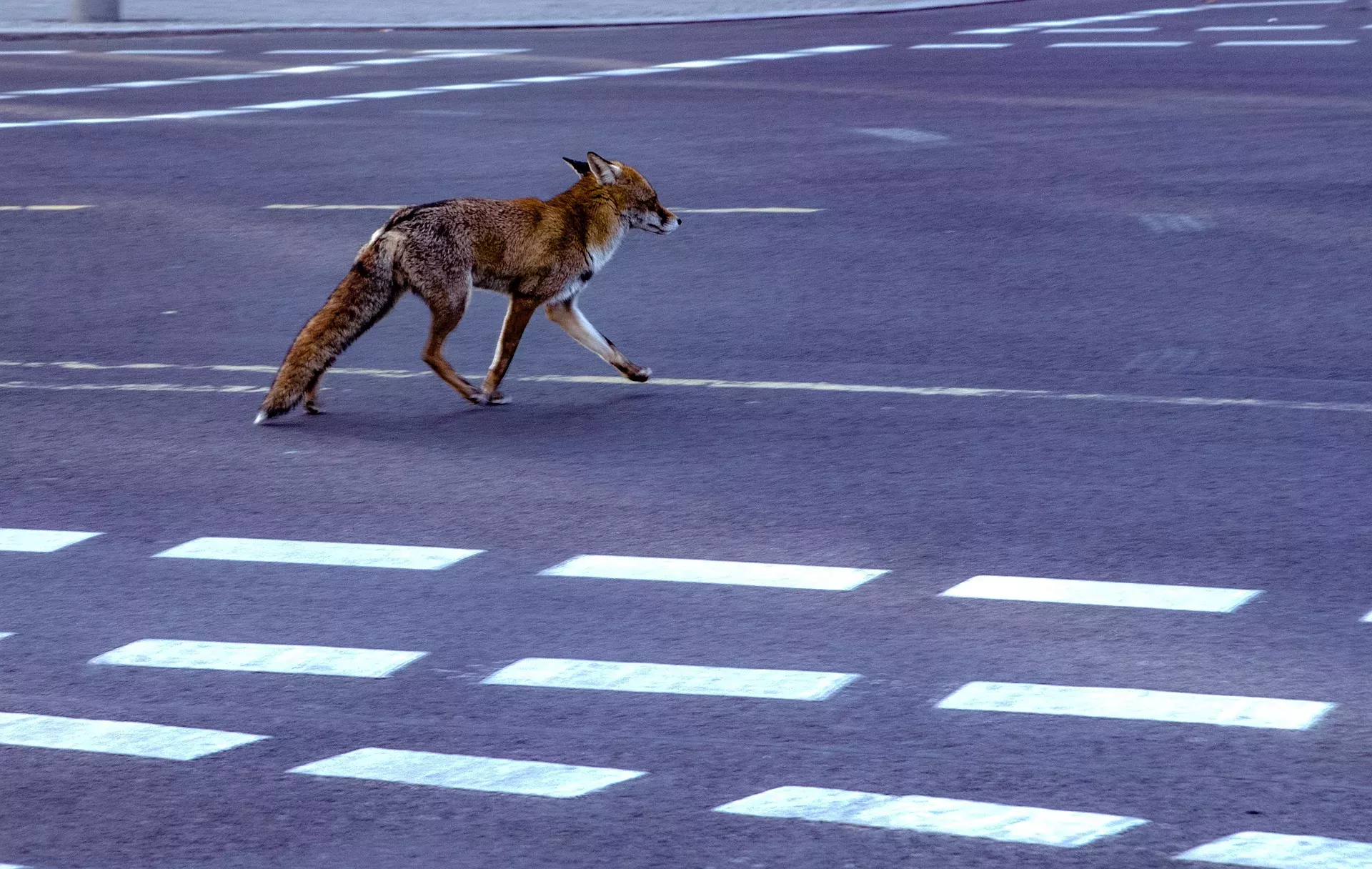
Flying around
Owls
There is something other-worldly in an owl’s graceful flight, steadfast attention, and deathly swoop.
There are three species you may see around Wakehurst’s woodlands and meadows.
The tawny owl (Strix aluco) has large dark eyes and a hooked yellow beak in its big round face. The soft fluffy edges on its wing feathers make it a silent hunter.
Did you know? 'Too-wit-too-whoo' is the call of the male ('too-wit') and female ('too-whoo') tawny owl in combination.
The barn owl’s white face is shaped to direct high-frequency sounds to its ears which helps it pinpoint prey.
Although its flight is silent, the shriek of the barn owl (Tyto alba) certainly isn’t! It has been known as the ‘demon owl’ thanks to its piercing screech and hissing calls.
Just 20cm tall, the little owl (Athene noctua) is the smallest in the UK. Its call sounds a bit like a meowing kitten, though you are more likely to hear its shrill alarm cry. Relatively sedentary, this owl grabs its prey after spotting it from a perch – look out for one resting on a tree branch or post.
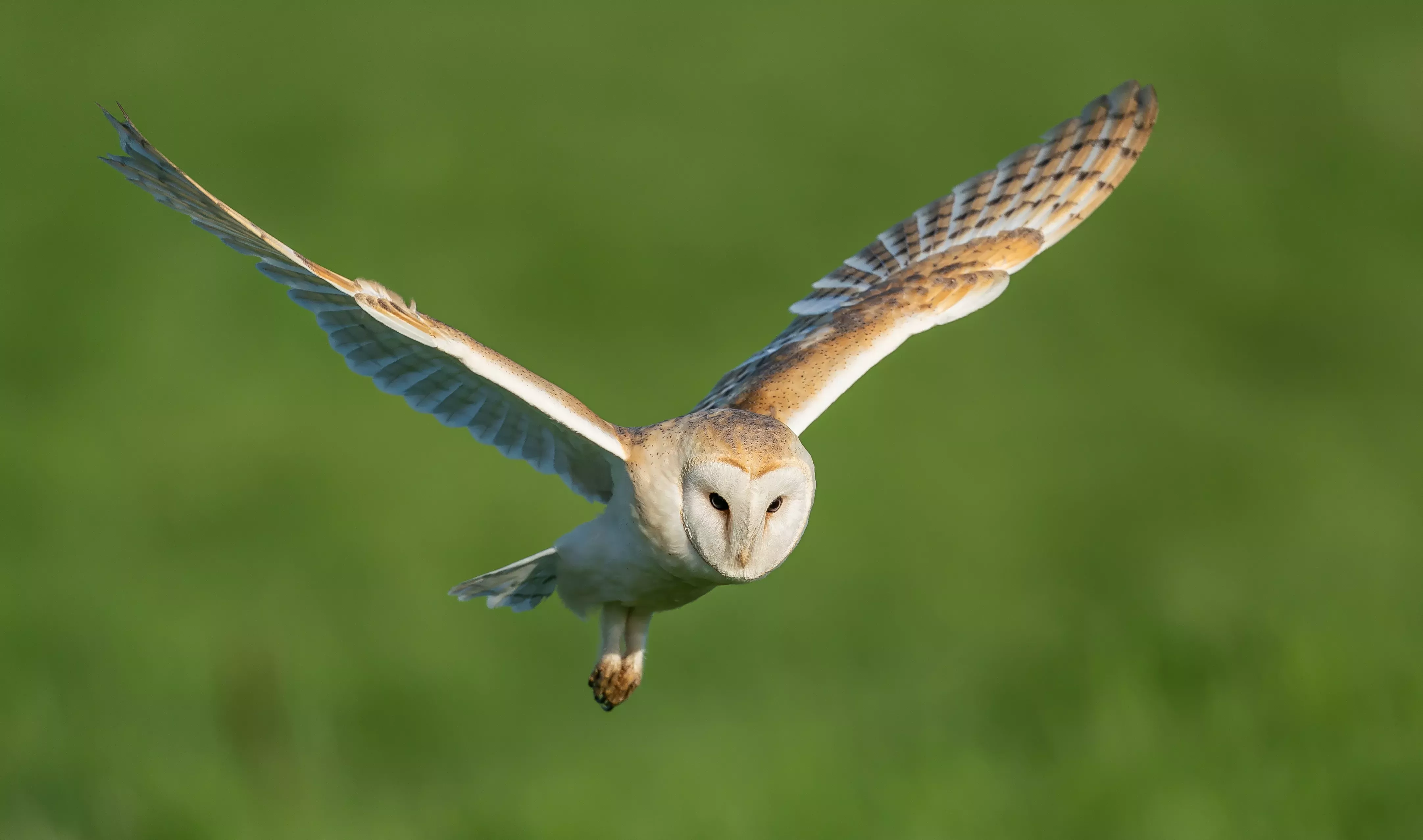
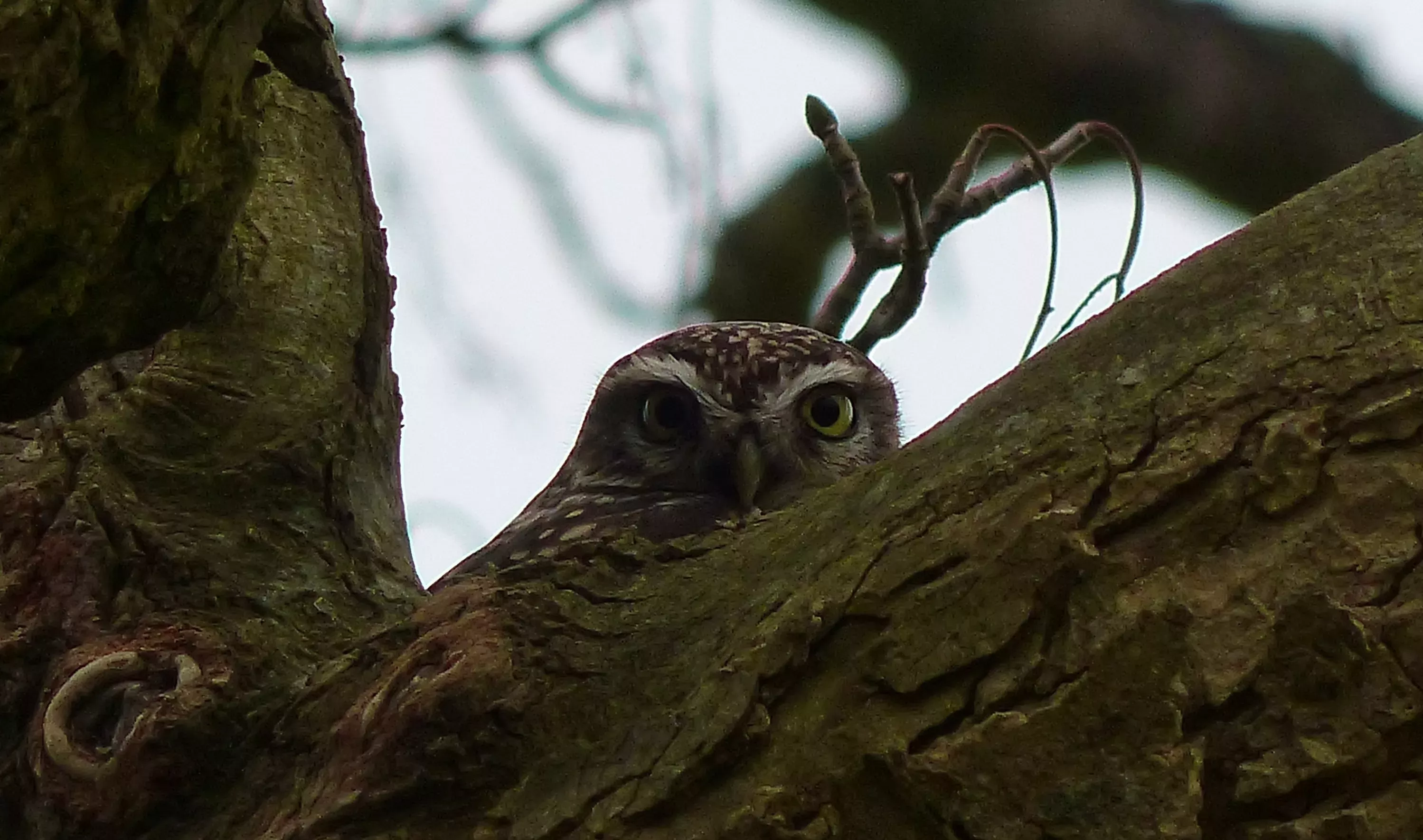
Bats
There are 18 species of bat in the UK and they are all insectivores.
Most of their food is caught and eaten on the fly, and all that flying requires energy. Even a tiny pipistrelle (which weighs no more than a pound coin) can eat up to 3,000 insects a night!
Bats hibernate, but in the summer you can see the common pipistrelle (Pipistrellus pipistrellus), the brown long-eared bat (Plecotus auritus), and the Daubenton’s bat (Myotis daubentonii) at Wakehurst.
Bats use echolocation to hunt, bouncing high-pitched sounds off objects to pinpoint them in space. An exception is the brown long-eared bat, whose ears (which are almost the same length as its body) are sensitive enough to hear a moth in flight.
We host summer bat walks at Wakehurst where you can learn more about these fascinating animals – keep an eye on our 'What’s on' page.
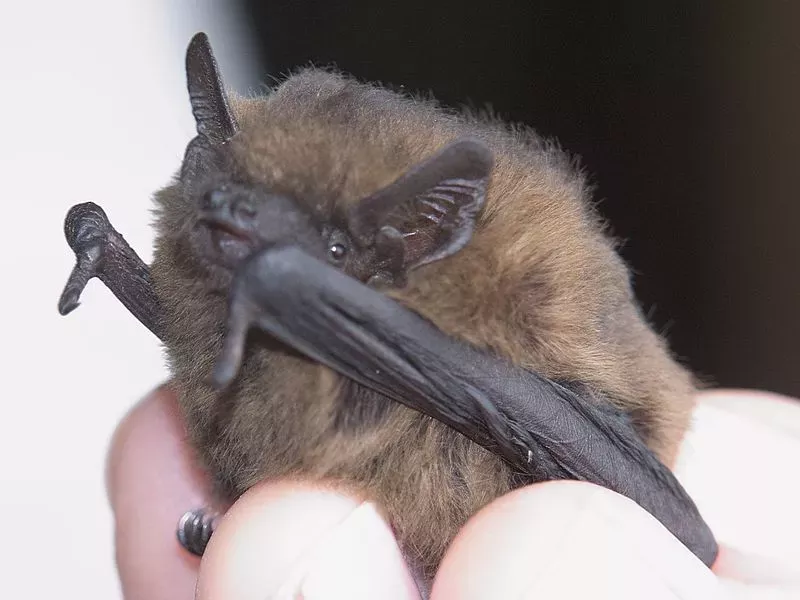
Moths
In addition to SameSky’s spectacular whisper of moths installation at Glow Wild, you may spot the winter moth which lives in woody areas, and the male December moth which has comb-like antennae to detect the scent of potential mates.
There are approximately 2,400 species of moth in the UK, with different species active in different months.
Brightly-coloured moths come to Wakehurst in the summer, including the striking red and black cinnabar moth and the fuchsia-striped elephant hawk moth.
In addition to being pollinators, moths and their caterpillars are an important food source for many other species.
Did you know? Many night-flying moths have evolved ear-like organs to detect and evade bats.
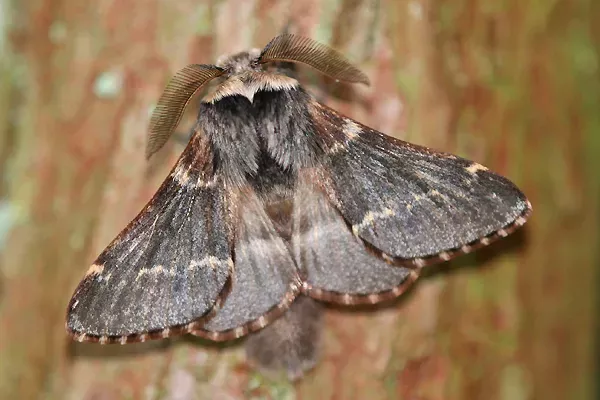
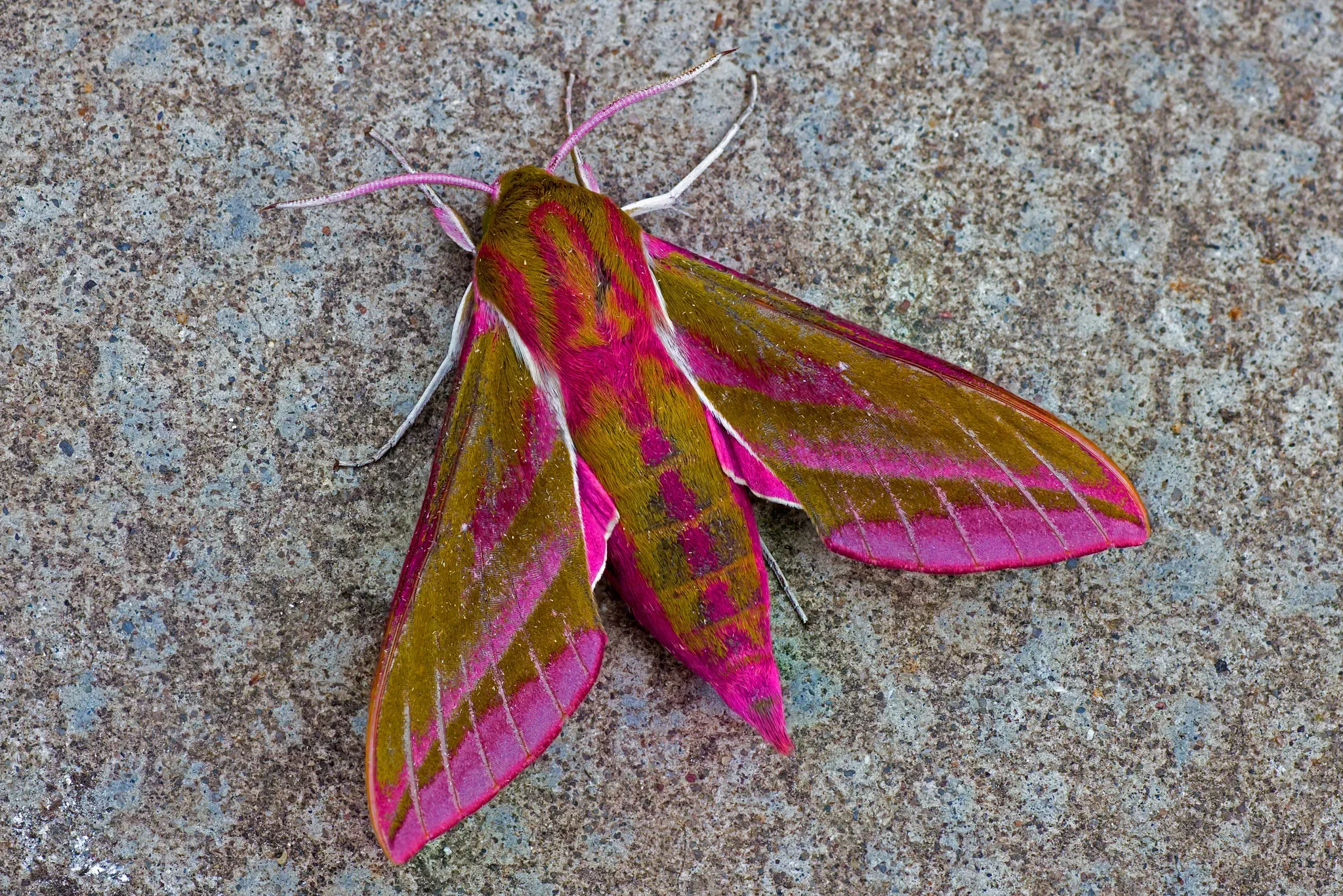
Underground
Badgers
Badgers (Meles meles) are the UK’s largest land predator. They have poor eyesight but an exceptional sense of smell and hearing, which makes locating food a snitch.
Badgers are omnivorous (they eat plants and animals) but love worms – they can eat several hundred a night! Their strong front paws are perfect for digging up dinner and constructing their homes.
Badgers live in large family groups (or clans) in well-maintained complex underground tunnels called setts, which are passed down through generations. Individuals forage for food alone however, and don’t generally share their spoils.
Lots of badgers live at Wakehurst but will retreat if they sense you nearby. If you are lucky, you may spot them from afar.
Keep a look out for badger tracks, holes and scratch marks from foraging, and heaps of soil and bedding material that can sometimes be found outside sett entrances.
You could also join one of our badger watching evenings, held in the summer. Tickets will be available on our events page in early 2022.
Did you know? Badgers are fossorial, meaning they dig and live primarily underground. Badgers usually come out of their setts when it is dark, but their activity underground takes place at various times of day and night.
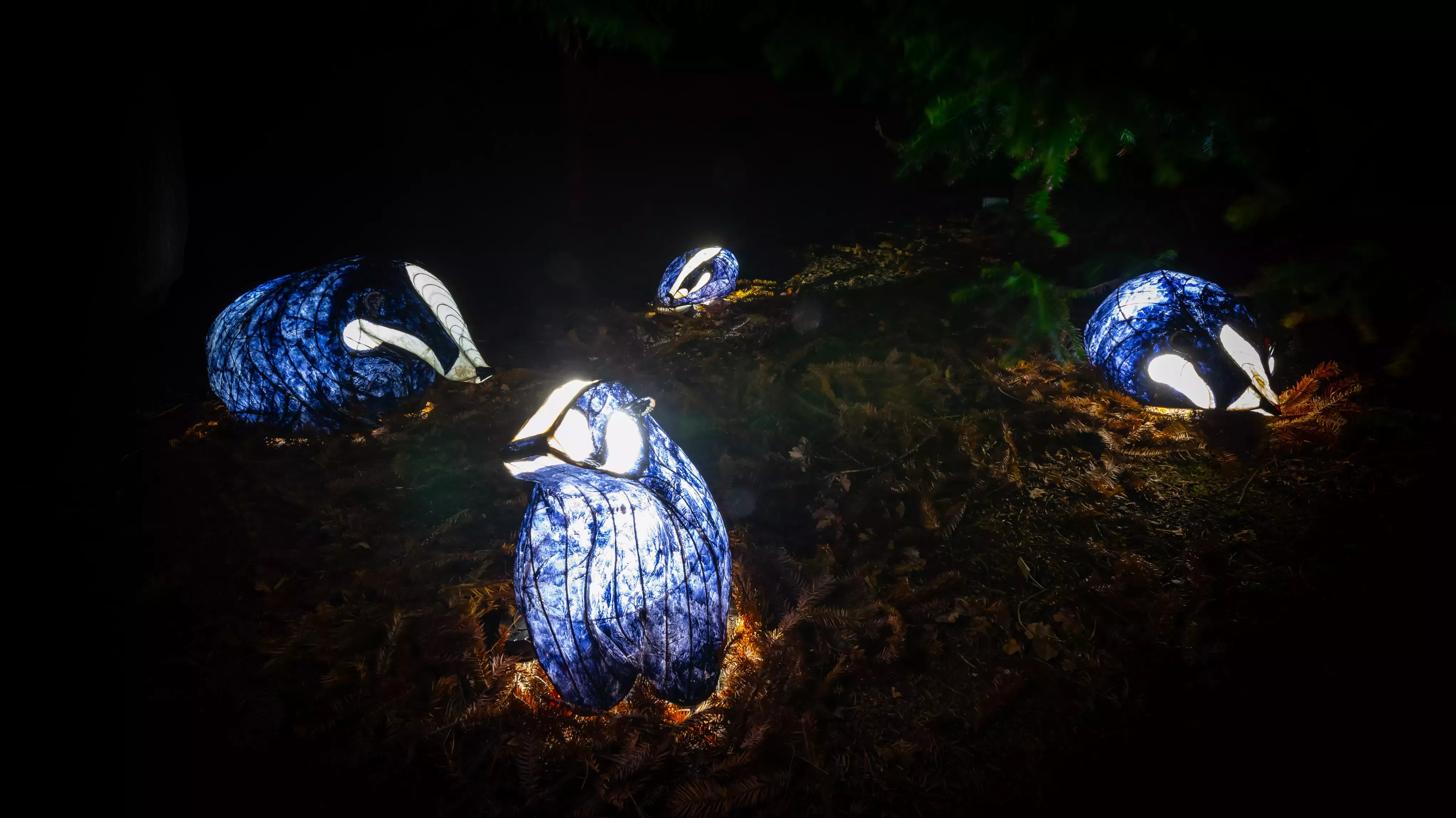
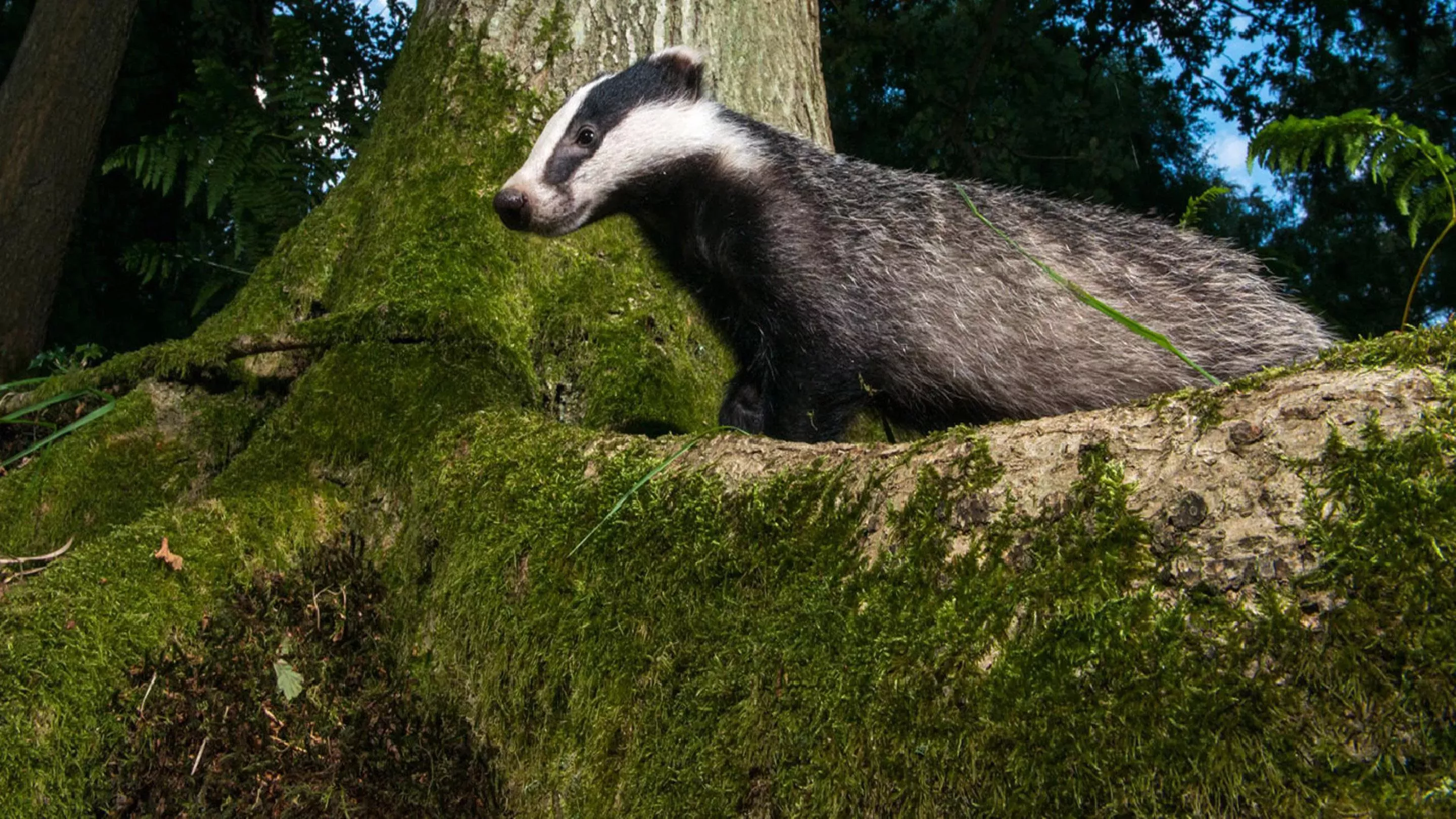
On the land
Foxes
Adapting equally well to urban and rural life, foxes (Vulpes vulpes) are social animals that live in loose family groups and are usually spotted at dusk and dawn.
Wakehurst’s foxes are rather secretive and will trot away if disturbed by the presence of humans, although one resourceful fox was found sleeping in our hay barn throughout winter!
You are most likely to hear the eerie scream of foxes in the winter months as this is when they mate. Cubs are very playful and are cared for by the mother and older family members.
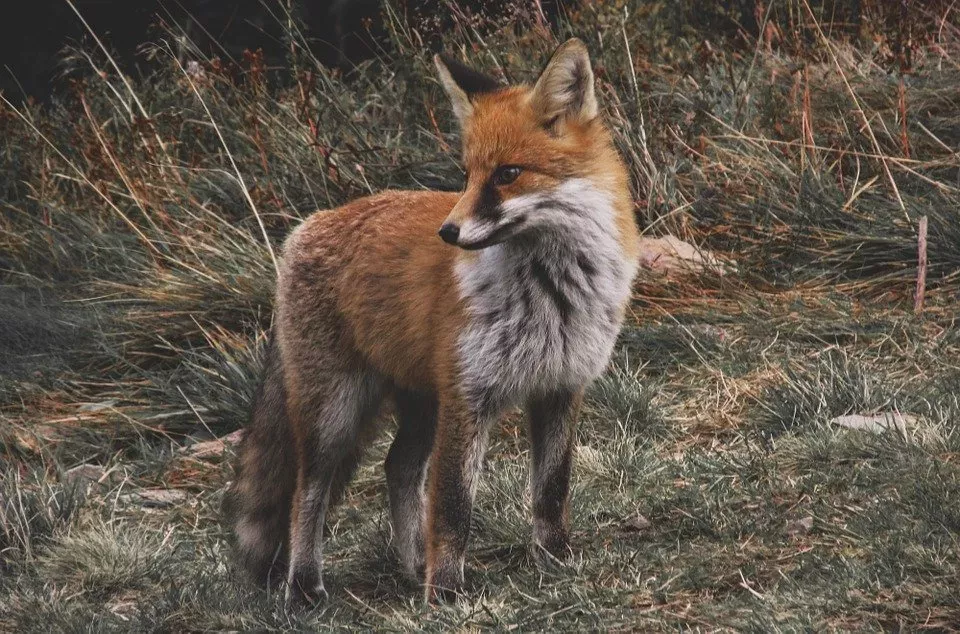
Glowworms
Despite their name, glowworms (Lampyris noctiluca) are beetles, with a bioluminescent section on their backs.
In the summer, the flightless female will climb to a high point like the top of a blade of grass, before emitting a bright greeny-orange light to attract male glowworms.
Adult glowworms don’t eat anything at all, but their larvae enjoy a slimy snack of slugs and snails. The larval stage can last up to three years, whereas the adults only live for a few weeks.
With a lot of flowered meadows and grassland, Wakehurst is a prime location for glowworms.
Inspired by glowworms, this year’s immersive Twilight Garden (in the Walled Garden) at Glow Wild is not to be missed!
Did you know? Soldiers in World War One used glow worms to read important messages or maps in the dark without giving their position away.
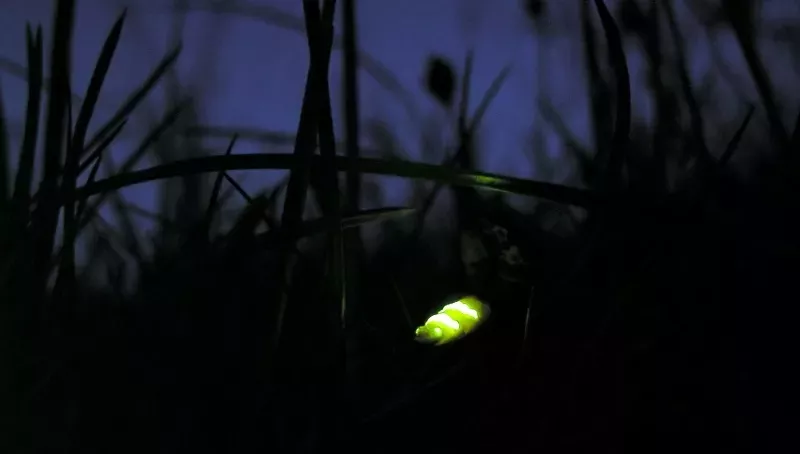
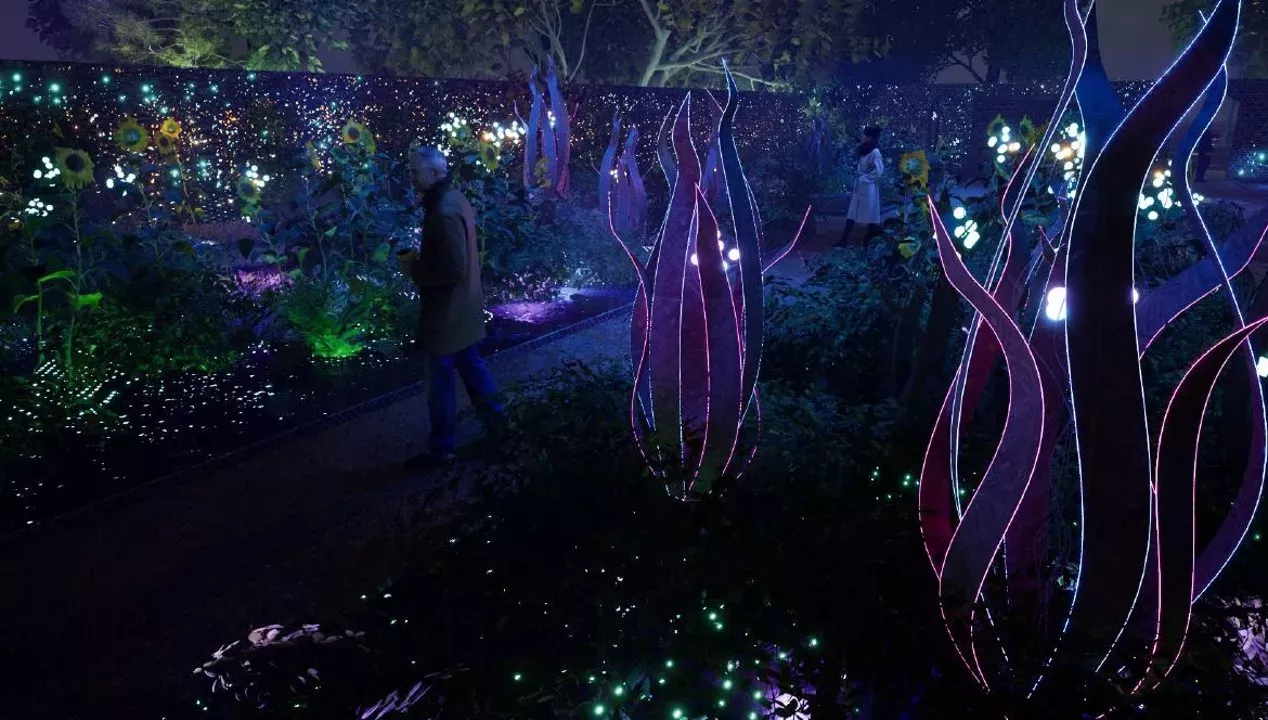
Catch a glimpse of the animals our camera traps recorded at Wakehurst this December in this captivating video from our YouTube channel.

